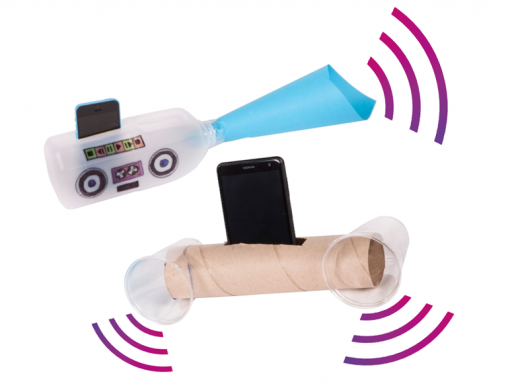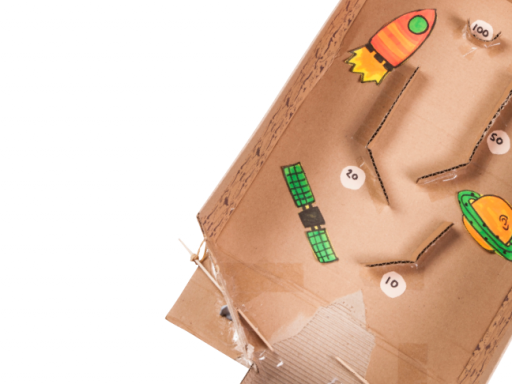Oil and water do not mix, but that can sometimes have its advantages. In this activity these properties are used to investigate density and create a home-made lava lamp effect.
Printable downloads
Follow these steps…

-
 Use the funnel to pour water into a clean bottle until it is one-third full. Add a few drops of red food colouring.
Use the funnel to pour water into a clean bottle until it is one-third full. Add a few drops of red food colouring. -
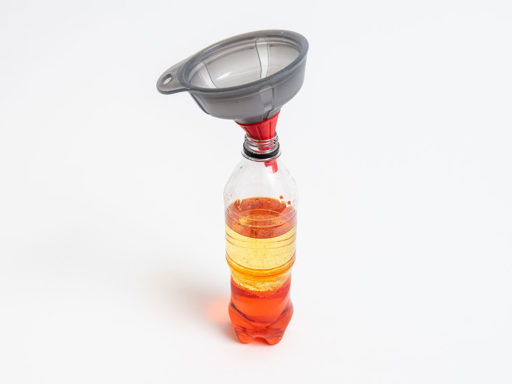 Fill the rest of the bottle with vegetable oil.
Fill the rest of the bottle with vegetable oil. -
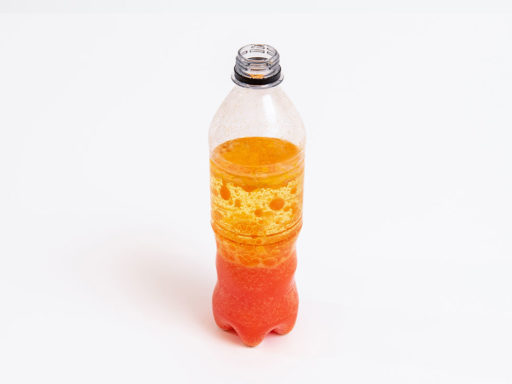 Break the vitamin tablet in half and add it to the bottle. Watch the lava bubbles!
Break the vitamin tablet in half and add it to the bottle. Watch the lava bubbles!
Think and talk about…
- What can you see happening?
- What directions are the bubbles moving in?
- Why does the water not mix with the oil?
Investigate…
- Try using a straw to blow bubbles into the layers. What happens?
- What effect does adding another vitamin tablet have?
- Try changing the order you put the water and oil in the bottle. Does it make any difference?
Did you know?
Some websites are secured using unbreakable codes generated by cameras looking at the unpredictable blobs and swirls inside lava lamps.
What’s the science?
 This lava lamp effect works for two reasons. The first is that oil and water don’t mix. This is because water molecules are attracted to each other but not to oil. The other reason is because of density, which is how compact a substance is. Water is denser than oil, so the oil layer stays on top.
This lava lamp effect works for two reasons. The first is that oil and water don’t mix. This is because water molecules are attracted to each other but not to oil. The other reason is because of density, which is how compact a substance is. Water is denser than oil, so the oil layer stays on top.
The vitamin tablet falls through the oil, and when it reacts with the water it produces bubbles of carbon dioxide gas. This gas floats to the surface because it is less dense than both the water and the oil, carrying some coloured water with it. When the bubbles pop, the gas is released, and the denser water sinks back down again.
Science in your world
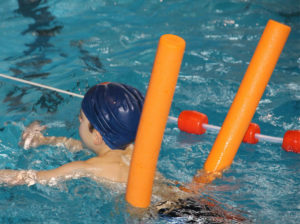 The density of objects is really important in our everyday lives. Floats help prevent swimmers sinking because they are a lower density than water and so remain buoyant.
The density of objects is really important in our everyday lives. Floats help prevent swimmers sinking because they are a lower density than water and so remain buoyant.

